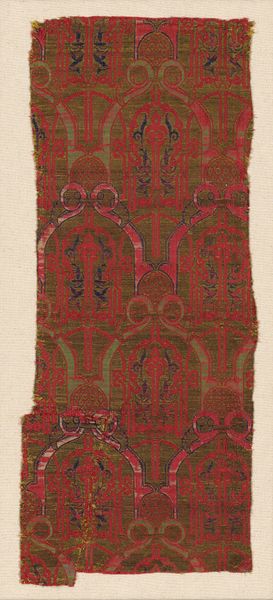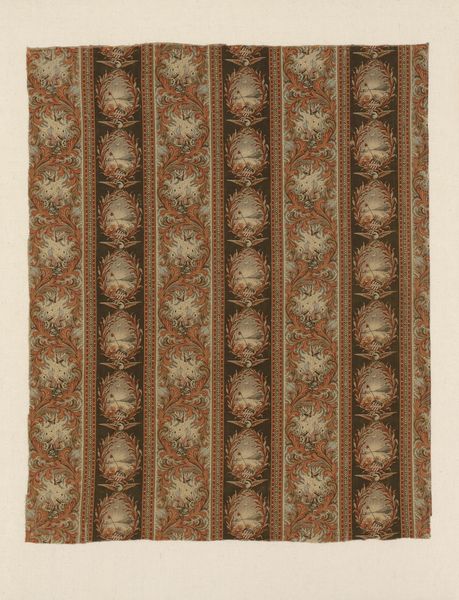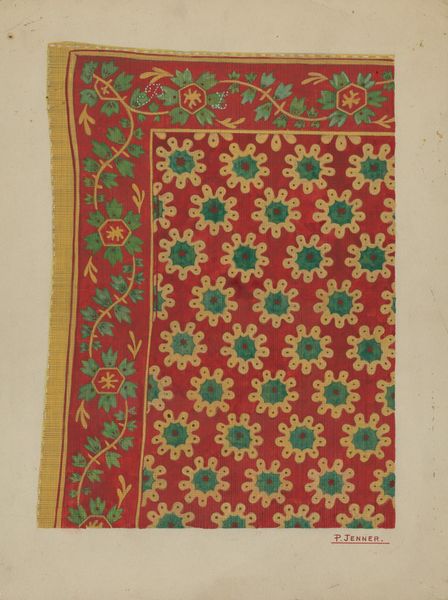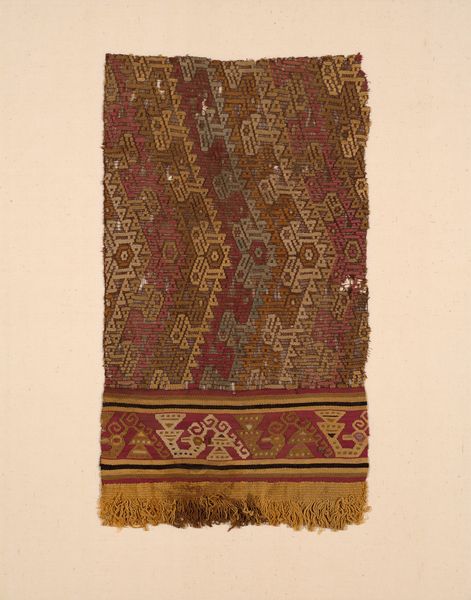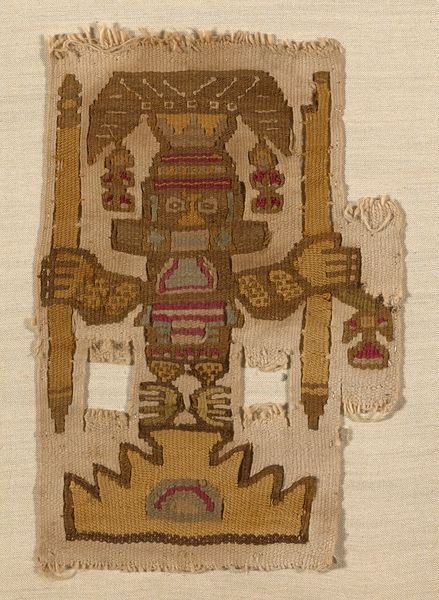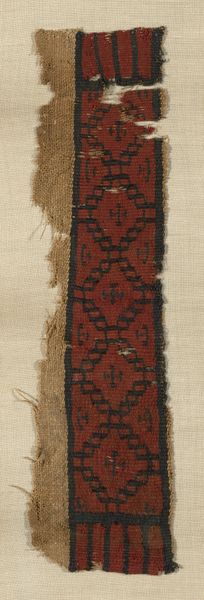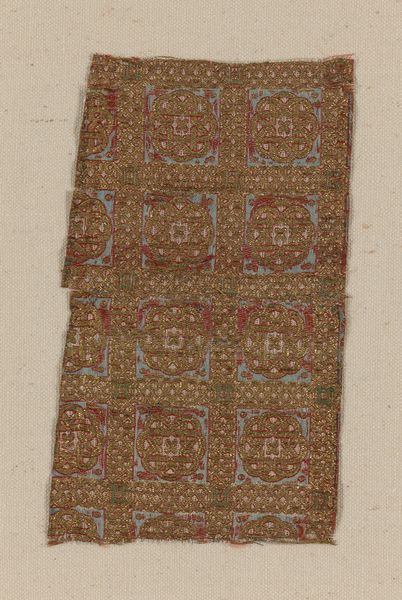
fibre-art, weaving, textile
#
fibre-art
#
weaving
#
textile
#
organic pattern
#
geometric
#
indigenous-americas
Dimensions: 89.9 × 41 cm (35 3/8 × 16 1/8 in.)
Copyright: Public Domain
Curator: Okay, so let's talk about this textile. What strikes you right away? Editor: All I can think is that the creator was just really into order, even while showing a dream. I'm getting a kind of hypnotic sensation from it; it has structure, yes, but it's kind of crumbling in spots like it can't quite handle that much form! It almost gives the feeling that there is more meaning because it doesn’t look finished or whole. Curator: It's fascinating that you picked up on that imperfection. It reminds us that textiles from the Lambayeque culture, which thrived in present-day Peru from roughly 1000 to 1476, served a wide variety of societal functions, so these were not simply ornaments. Editor: It's really the color that grabs you first—all that striking madder red that hasn't faded much with time. So how were textiles displayed? Were they viewed much? Or are we talking ceremonial use, maybe things buried with leaders to take elsewhere? Curator: Often, these panels like this one were created to reflect and reinforce a political message of authority. What's crucial to remember about textiles, and especially this type of work, is its potential for transmitting social status. These complex textiles like the “Panel,” served to establish elite prestige and visually reinforce an existing socio-political order. Editor: You see the prestige woven in – but all I see is a very clever puzzle and game. Almost like a complicated, ornate game-board! I'm trying to find where all of the pieces fit and tell the stories it conceals, one being about a really colorful cosmos full of funny animals. Curator: That's insightful. I can see your reading. I see you understand it is something to "see". As art of the America's the aesthetic experience this weaving provides shows how Indigenous textile production was part of establishing unique perspectives to challenge Eurocentric histories and art production. Editor: It’s always intriguing what we decide to carry forward – fragments survive that suggest the whole; each piece is so fragile, but together, so forceful. Curator: I agree. These kinds of visual and material paradoxes are critical for understanding art history from an interdisciplinary and global perspective.
Comments
No comments
Be the first to comment and join the conversation on the ultimate creative platform.
